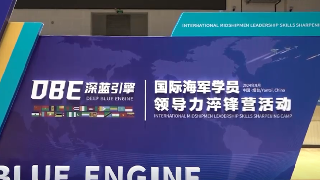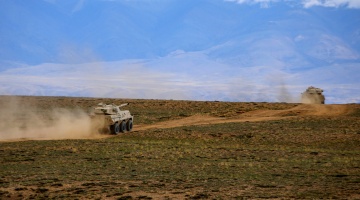By Le Shui
Recent reports indicate that the US intends to indefinitely deploy the land-based mid-range Typhon missile system in the Philippines, further escalating the atmosphere of a New Cold War in the Asia-Pacific. In April of this year, during joint military exercises, the US introduced the Typhon system to the Philippines. Initially, it was scheduled to withdraw from Luzon Island by September, yet there are currently no signs that the US intends to pack up and leave. Notably, the Philippine military has also voiced its desire for the Typhon system to remain deployed in the country for a long period. This synchronized messaging from both the US and the Philippines suggests a concerted effort to establish the permanent presence of the system in the Asia-Pacific.
Moreover, the US' ambitions extend beyond this. This August, during her visit to Japan, US Army Secretary Christine Wormuth proposed that US Army's Multi-Domain Task Forces (MDTFs) participate in military exercises in Japan. Given that the MDTFs are also equipped with the Typhon system, Wormuth's true intentions are clear: to deploy the Typhon system in Japan once again under the pretext of military exercises.
The Typhon is the first land-based mid-range missile system developed by the US after its withdrawal from the Intermediate-Range Nuclear Forces (INF) Treaty in 2019. This advanced system is capable of firing the Tomahawk Land Attack Missile and the Standard Missile-6 to strike ground targets, with a maximum range of up to 1,800 kilometers. Once stationed on Luzon Island in the Philippines, the Typhon will not only directly threaten China's islands in the South China Sea and Hainan Island, but will also extend its strike capabilities to China's southeastern coastal provinces like Guangdong, Fujian, and Zhejiang. Furthermore, if deployed in Japan, the Typhon would place China's inland regions well within its strike range.
Evidently, the reason the US is painstakingly deploying the Typhon in the Asia-Pacific is to establish a mid-range missile encirclement aimed squarely at China in the Western Pacific. Yet, this maneuver is sure to dramatically escalate regional tensions and could even push the Asia-Pacific towards the brink of a new Cold War.
Mid-range missiles are a product of the Cold War era. During the peak of the Cold War in the latter half of the 20th century, the US and the Soviet Union engaged in an arms race, competing to develop nuclear weapons and continuously expanding their nuclear arsenals. As the pressure of this nuclear arms race escalated, the two sides were compelled to sign the INF Treaty in 1987, which stipulated that neither country would possess, produce, or test land-based cruise missiles and ballistic missiles with ranges between 500 and 5,500 kilometers.
However, with the end of the Cold War, the INF Treaty gradually became obsolete. Following the dissolution of the Soviet Union, the US emerged as the world's sole superpower, possessing an overwhelming advantage in both conventional and nuclear weapons that no other country could match. The nuclear balance established during the Cold War was thus disrupted.
For the US, the INF Treaty became a hindrance to its ambitions for global nuclear hegemony and an obstacle to its strategy of containing China, especially as its strategic focus shifted toward the Asia-Pacific. Consequently, in August 2019, the Trump administration announced the US withdrawal from the INF Treaty. Allegedly, just two weeks later, the US military tested a land-based mid-range cruise missile with a range exceeding 500 kilometers on San Nicolas Island in California. This urgency to reinforce its global nuclear hegemony is unmistakably evident.
From its withdrawal from the INF Treaty to its attempts to deploy the Typhon system in the Philippines and Japan, the US has been methodically implementing strategic deterrence against China, thereby gradually undermining the strategic balance in the Asia-Pacific. However, as stability and development remain the shared aspirations of countries in this region, the US' efforts to forge alliances and stir up regional tensions will only worsen the security environment and heighten the risks of a new Cold War.
The deployment of the Typhon system by the US in the Philippines is a calculated move aimed at dragging the Asia-Pacific into the quagmire of an arms race, signaling a potentially dangerous resurgence of the "specter" of the Cold War. In response, China and all peace-loving ASEAN countries should unite to collectively resist the provocative actions of the US and the Philippines, thereby safeguarding the hard-won stability and prosperity in the region.
Editor's note: Originally published on china.com.cn, this article is translated from Chinese into English and edited by the China Military Online. The information and opinions in this article do not necessarily reflect the views of jmhuiquan.com.









